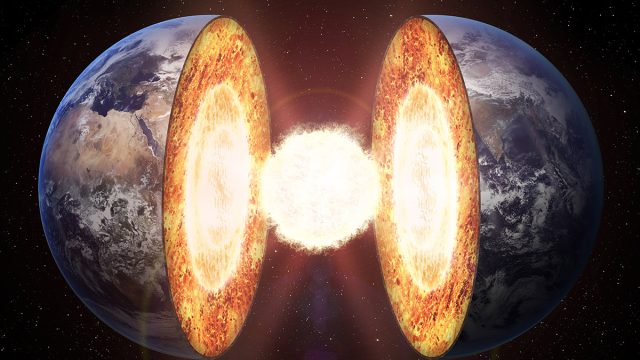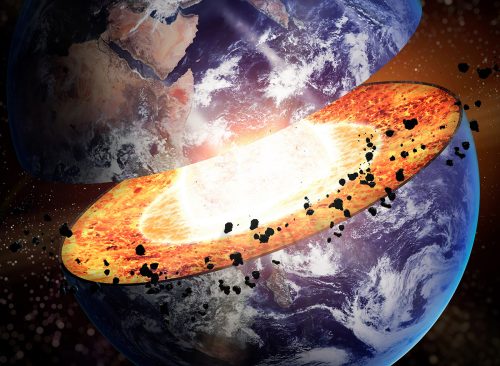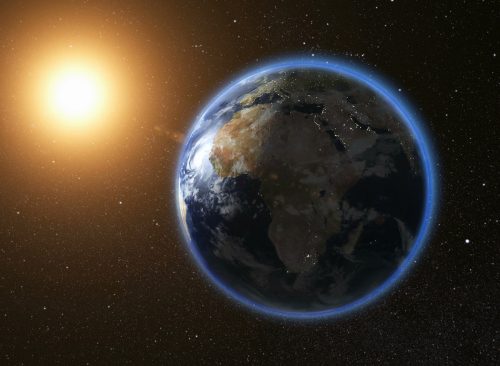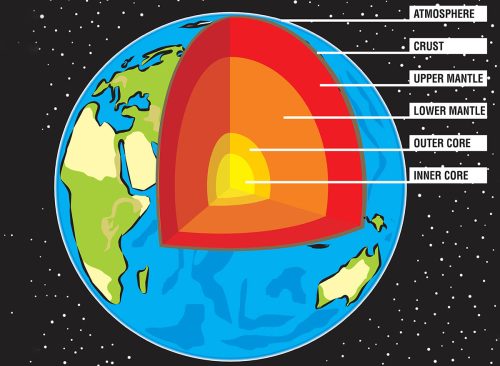Earth's Inner Core Has Stopped Spinning in the Same Direction as the Rest of the Planet, Study Says
Inner core rotates "like a swing."

A new study has found that Earth's core may have started spinning in a different direction from the rest of the planet, a discovery that has raised controversy among experts. Sitting about 3,100 miles below the surface of the earth, the planet's inner core is capable of rotating on its own because it floats in liquid metal. But because it's buried so deep within the Earth, little is known about it.
Scientists have drawn conclusions from measuring tiny differences in seismic waves created by earthquakes as they pass through the middle of the Earth. Read on to find out what the researchers behind the new study found and what implications it may have for the rest of the planet.

For the study published in the journal Nature Geoscience, researchers analyzed seismic waves from repeating earthquakes over the last six decades. The study's authors, Xiaodong Song and Yi Yang of China's Peking University, said they determined that the inner core's rotation "came to near halt around 2009 and then turned in an opposite direction."
"We believe the inner core rotates, relative to the Earth's surface, back and forth, like a swing," they told AFP. "One cycle of the swing is about seven decades," meaning it changes direction roughly every 35 years, they said.

The researchers said the inner core previously changed direction in the early 1970s and would likely do so again in the mid-2040s. The researchers said this rotation roughly correlates "length of day" — small variations in the exact time it takes Earth to rotate on its axis.

There isn't much evidence that the behavior of the inner core affects the inhabitants of the Earth. But the researchers believe all of Earth's layers are somehow connected. "We hope our study can motivate some researchers to build and test models which treat the whole Earth as an integrated dynamic system," they said.

Not all experts agree with the study's findings. "This is a very careful study by excellent scientists putting in a lot of data," said John Vidale, a seismologist at the University of Southern California. "(But) none of the models explain all the data very well in my opinion."
Vidale published research last year suggesting the inner core changes direction far more frequently—every six years or so. Another theory holds that the inner core only significantly moved between 2001 to 2013 and has stayed in place since.

Hrvoje Tkalcic, a geophysicist at the Australian National University, has published research suggesting that the inner core's cycle is every 20 to 30 years. "These mathematical models are most likely all incorrect because they explain the observed data but are not required by the data," he said. "Therefore, the geophysical community will be divided about this finding and the topic will remain controversial."
Because scientists are unable to see to the center of the earth—like a doctor might examine a body with a CT scan—experts predict there's more to discover about the inner core. For example, it might have another solid ball inside it. "Something's happening and I think we're gonna figure it out," Vidale said. "But it may take a decade."














